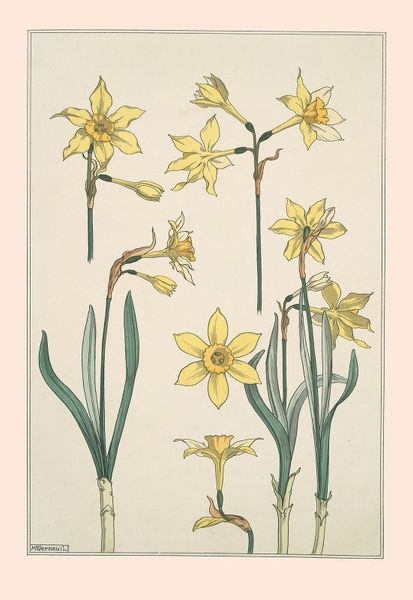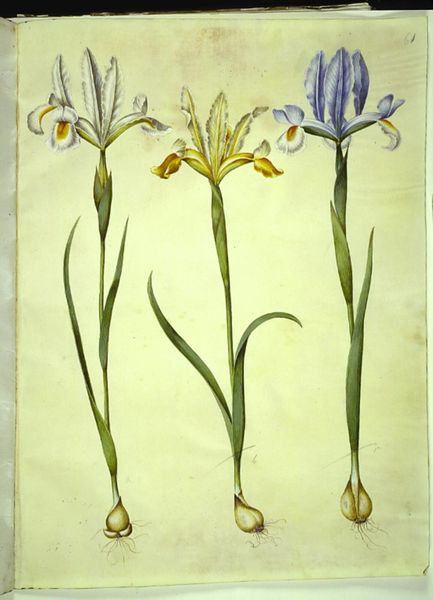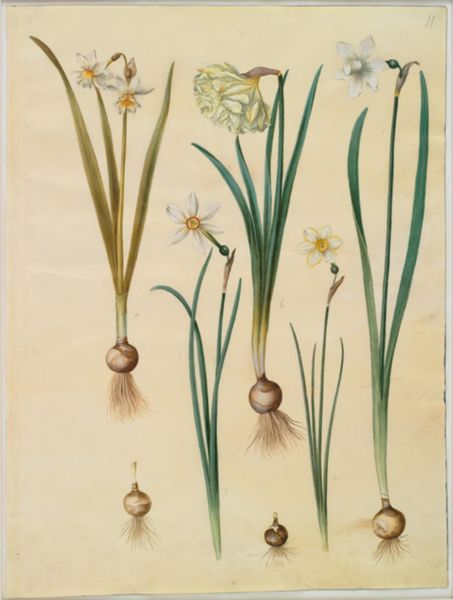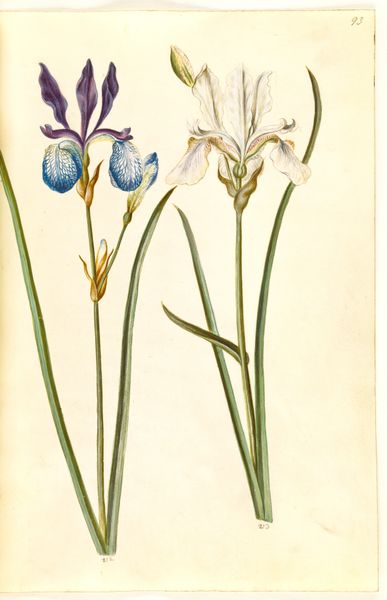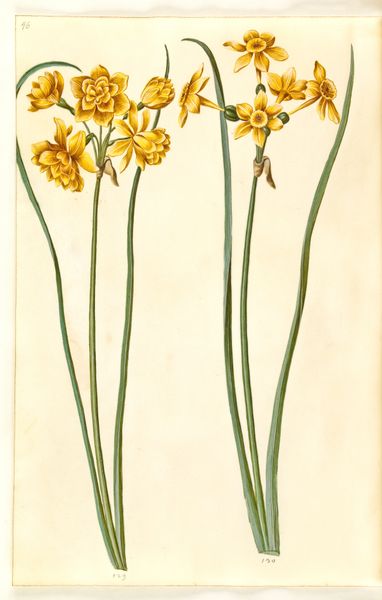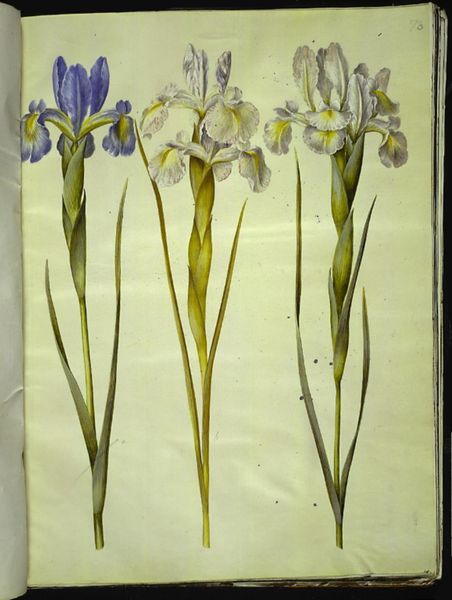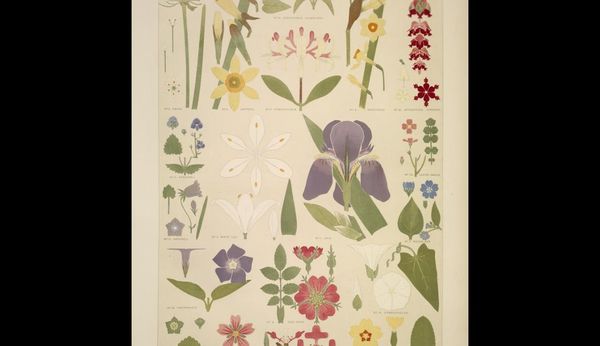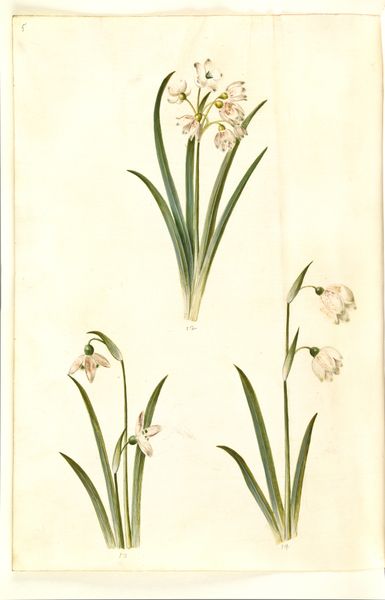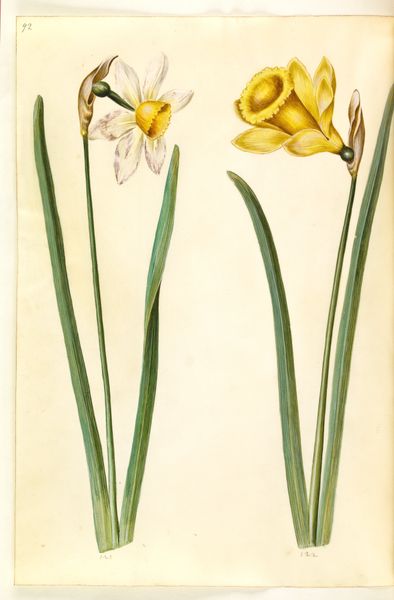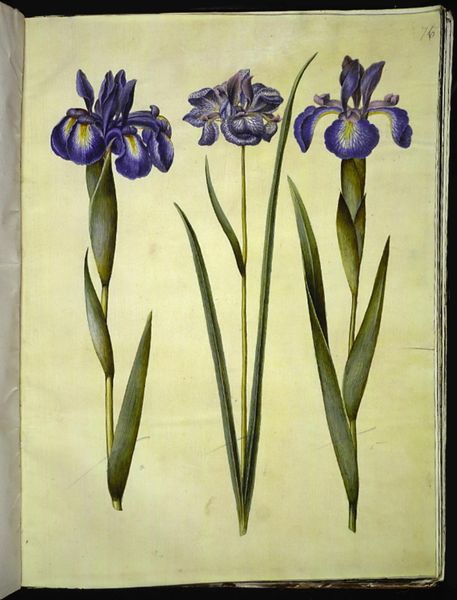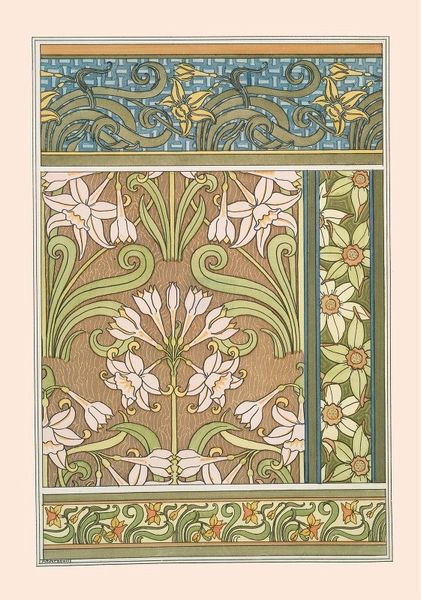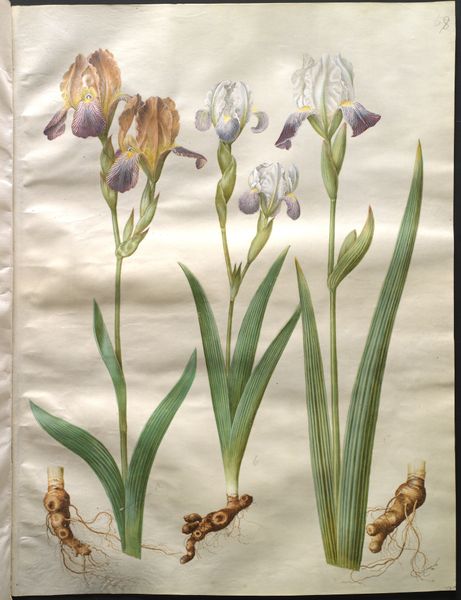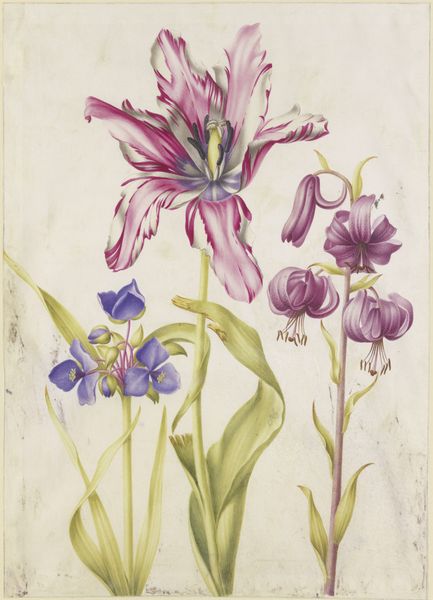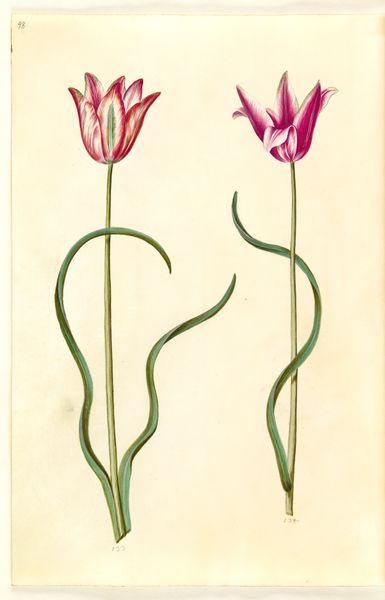
print, linocut
#
art-nouveau
# print
#
linocut
#
linocut print
#
flower pattern
Copyright: Public Domain: Artvee
Editor: We're looking at Maurice Pillard Verneuil's "Perce-neige," a linocut print from 1896. It’s a fairly simple, yet elegant arrangement of snowdrop flowers, mostly focused on line and gentle curves. What captures your attention most about it? Curator: You know, these little snowdrops—or perce-neige, "pierce the snow," as the French so beautifully put it—they’re more than just botanical illustrations, aren’t they? They are like little dreams pushing up through a long winter, reaching toward that faintest glimmer of hope. I feel as though Verneuil’s letting us in on a secret, a shared wish for rebirth. Editor: I like that; a shared wish. Can you expand on the context of that idea of rebirth at that time? Curator: Absolutely! This piece comes from the Art Nouveau period, and you see the movement's signature embrace of nature. It’s a rejection, really, of industrial drudgery. But look closer...Do you notice how Verneuil almost deconstructs the flowers, dissecting them? He reduces them to these essential lines and flattened forms. Editor: Yes, it's almost scientific in its presentation. Not like a wild field, but a collection. Curator: Exactly! Almost clinical, but not without a pulse. Verneuil does this dance of cool observation and this warm celebration of nature, a yearning for a return to beauty when the world outside seems, or feels, pretty ugly. I feel it keenly, myself. The linework alone holds you in its embrace. The shadows falling across them ground them, create life. Editor: It definitely gives me a new appreciation for printmaking, the power it can have. So precise yet expressive. Thanks for that. Curator: My pleasure. These flowers are hardy... Perhaps they'll inspire us to be a little hardier ourselves!
Comments
No comments
Be the first to comment and join the conversation on the ultimate creative platform.
